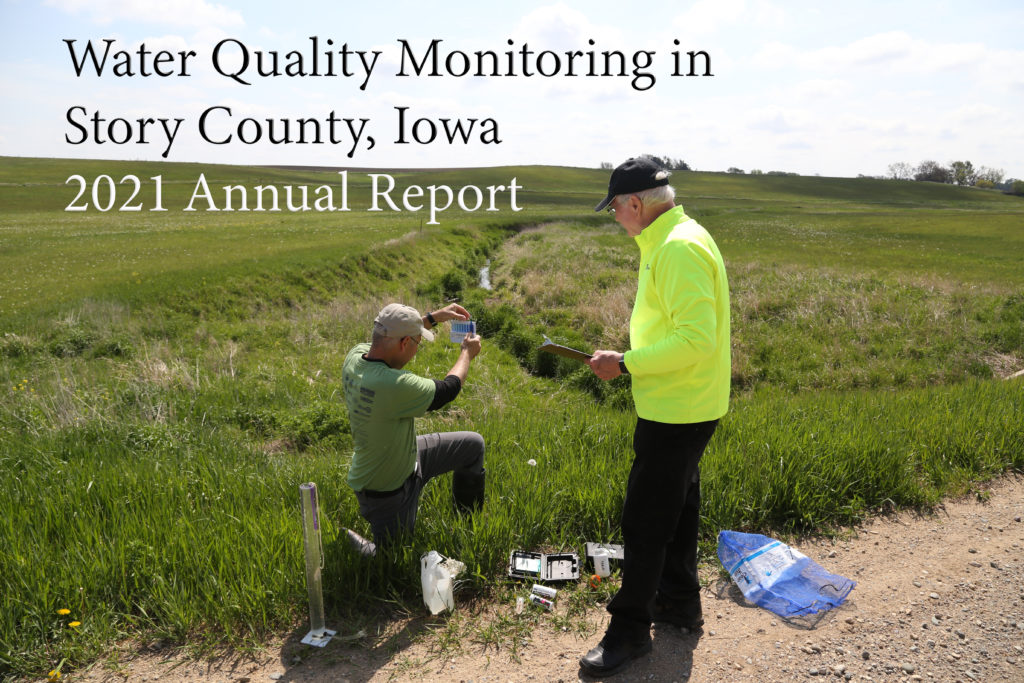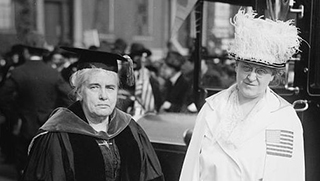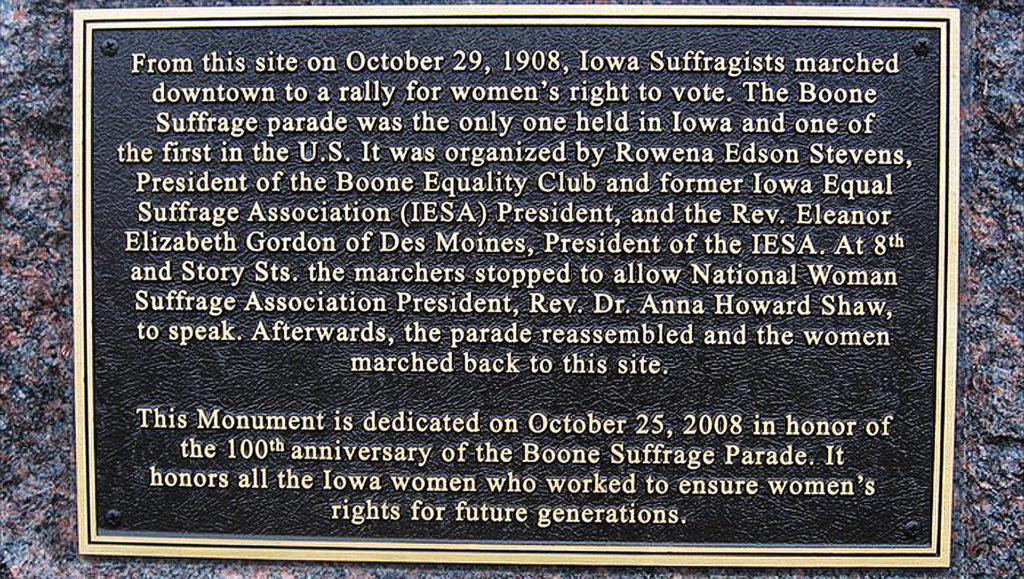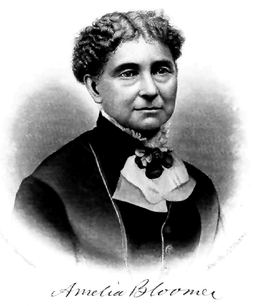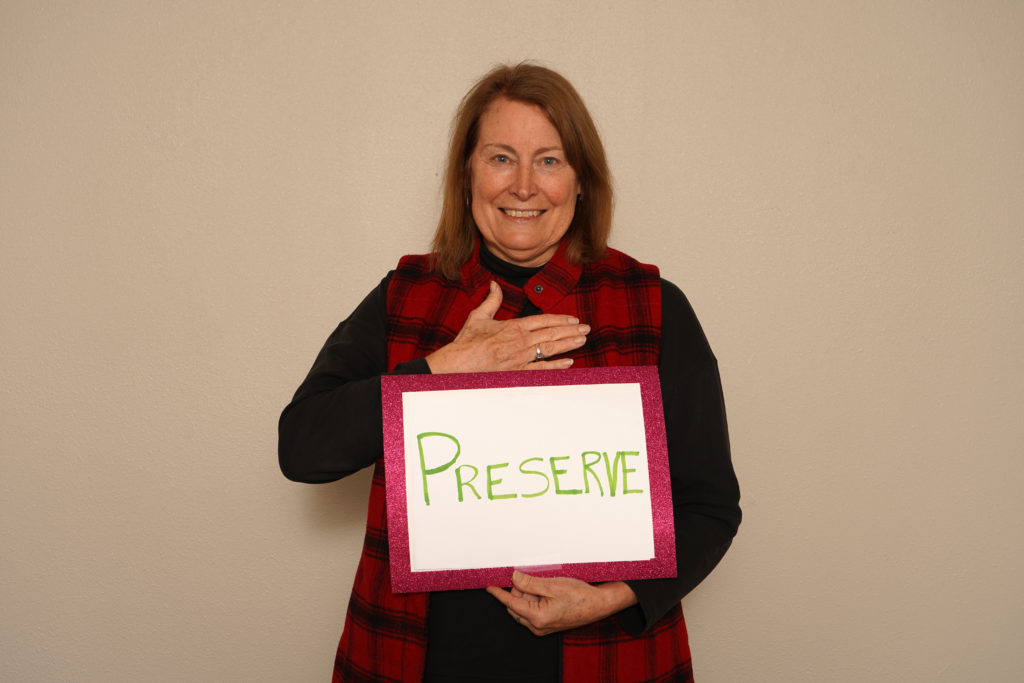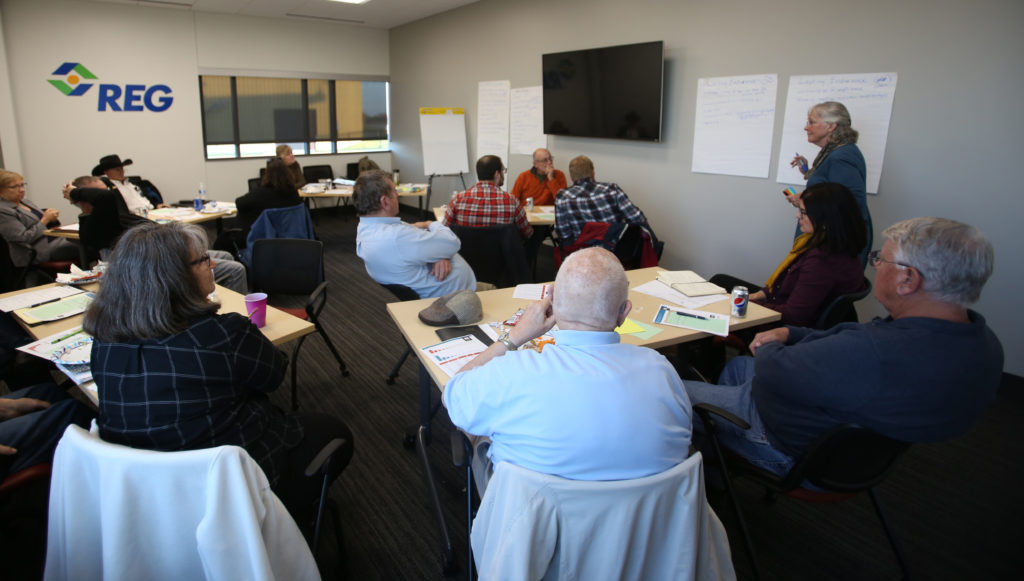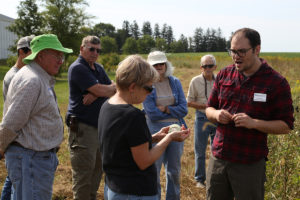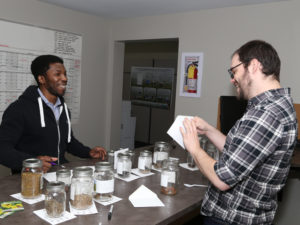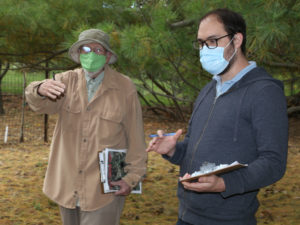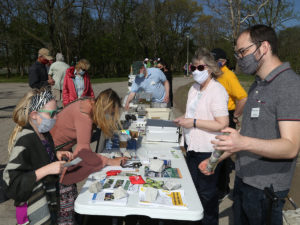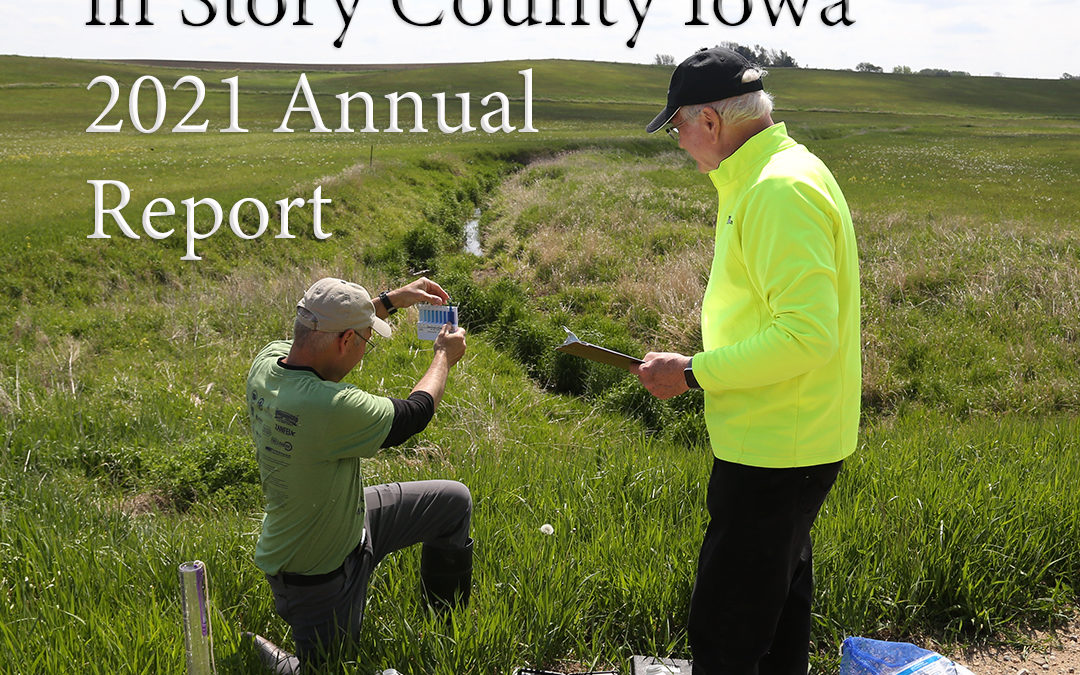
Prairie Rivers of Iowa Releases Story County Water Quality Monitoring Annual Report
Prairie Rivers of Iowa has just released an annual report investigating water quality in streams and lakes around Story County. Prairie Rivers of Iowa worked with Story County Conservation, the City of Ames, and other partners in 2020 to initiate a locally-led water monitoring program including both volunteer and laboratory testing.
The report’s author Prairie Rivers of Iowa Water Quality Specialist Dan Haug states, “Our partners and volunteers have gone to a lot of trouble to test rivers and lakes across the county, so we take seriously the job of interpreting the data.” He continues, “It’s only the second year of the program, but we’re starting to see patterns that can help us evaluate nutrient reduction efforts and improve our streams for recreation and fisheries.
Some of the key findings detailed in the report include the risks of waterborne illnesses, algae blooms in lakes and streams, the impacts to aquatic life and the effects of excess nutrients being sent downstream, eventually to the Gulf of Mexico.
“The water monitoring planning team is working hard to bring together all the resources we can to conduct monthly water testing, equip volunteers, educate elected officials and the public about the many water quality issues in our lakes, rivers and streams,” according to Haug.
In 2021, E. coli bacteria was usually low at swimming beaches and parts of the South Skunk River, but high in most creeks. The influence of nitrogen and phosphorus loads from Story County did not have as much influence on hypoxia contamination to Gulf of Mexico in 2021 due to a dry year, but the plan calls for continued monitoring to determine the effects during normal to wet periods helping to identify hot spots and evaluate whether conservation practices are working.
Water quality monitoring results in Story County did however reveal that during dry conditions in 2021, the highest levels of nitrogen and phosphorus were found below wastewater treatment plants. Wastewater effluent may be contributing to low dissolved oxygen levels in some streams harming aquatic invertebrates yet more monitoring is needed to establish patterns.
Other findings during the past year conclude that untreated stormwater from older neighborhoods has extremely high levels of sediment, phosphorus and bacteria.
Water monitoring was guided by a ten-year plan written by nine local partners and facilitated by Prairie Rivers of Iowa.
Water samples were collected monthly from 15 sites and weekly from three sites, with laboratory support provided by the City of Ames. Story County Conservation launched a volunteer monitoring program with 17 individuals and one business participating. Prairie of Iowa used special hardware to collect samples of runoff from rainstorms.
The entire Story County 10-year Water Quality Monitoring Plan, Annual Report, water quality updates, real-time data and educational articles can be found here.
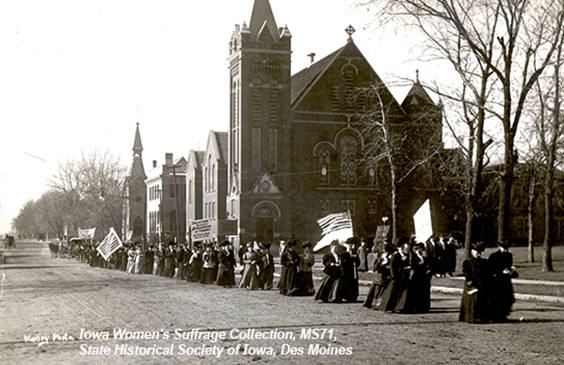
Women’s Suffrage History Along the Lincoln Highway in Iowa
As you travel along the Lincoln Highway Heritage Byway you’ll find many cultural and historic points of interest — including a retracing of footsteps taken by many responsible for pioneering women’s suffrage in Iowa. This March, we commemorate Iowa History and Women’s History month, let’s take a look at a couple of related stories.
Championing the ensuing parade was a car transporting the then National Women Suffrage Association President Dr. Anna Howard Shaw.
The Bloomer family settled in Council Bluffs in 1855 where Amelia continued her activism and was Iowa’s first resident to speak publicly for women’s suffrage. She started the Soldiers’ Aid Society of Council Bluffs to assist Union soldiers and served as president of the Iowa Suffrage Association from 1871-1873.
The next time you’re traveling the western edge of the Lincoln Highway in Iowa be sure to visit Council Buff’s Fairview Cemetery and pay respect to the American women’s movement pioneer Amelia Jenks Bloomer.
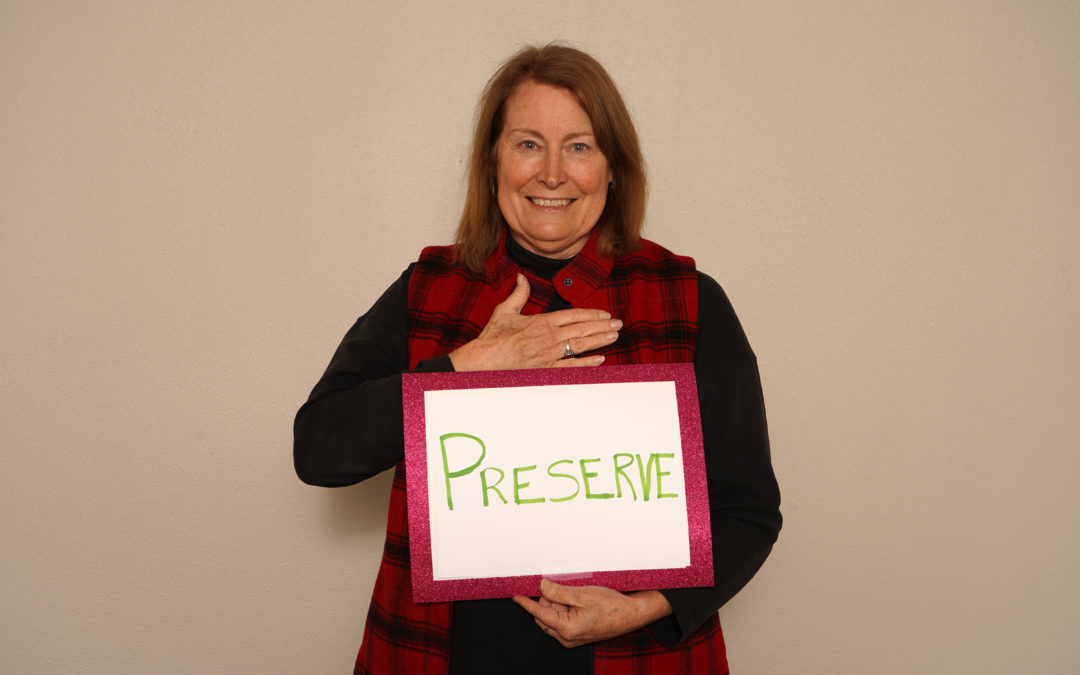
Prairie Rivers Staffer Shellie Orngard Named to Change for Climate Cohort
The Iowa Conservation Education Coalition has created a select group of community environmental leaders to be part of a Change for Climate Cohort who will “receive training, professional mentoring and support, and funding to define and implement community projects that address real problems faced by Iowans due to climate change”.
Environmental leaders from across Iowa have recently been named to the cohort including Prairie Rivers of Iowa Lincoln Highway Heritage Byway Coordinator Shellie Orngard.
Dr. Jean Eells is seen here leading a visioning session for Prairie Rivers staff and board of directors back in 2019.
Thanks to Resource Enhancement and Protection Conservation Education Program (REAP-CEP) funding along with coaching support from the E Resources Group’s Dr. Jean Eells, a frequent Prairie Rivers of Iowa collaborator, the cohort will create partnership and spearhead project that will address climate change issues based on what is best for their local communities. Additional training sessions will Community-Based Social Marketing and Resiliency and Adaptation to Climate Change workshops. The cohort is slated to begin sharing their projects with their communities in early 2023.
In addition to Prairie Rivers’ Orngard, other new members to the cohort include Northeast Iowa Peace & Justice Center’s Sharlene Bohr, Erica Carns of the Blank Park Zoo, City of Dubuque Sustainability Office/Green Iowa Americorps’ Sam Harris, and Story County Conservation Naturalist Beth Waage.

Thank You, David Stein!
Last month marked the departure of our pollinator and native plant expert David Stein as he heads back to work in his home state, our neighbors to the north, Minnesota. We are missing his passion and work ethic, but our Watersheds and Wildlife program continues as always and efforts are well underway to find his replacement.
David contributed to a large part of Prairie Rivers of Iowa’s continued efforts to impact public awareness and implementation of conservation practices to create native plant, pollinator and wildlife habitat to help improve soil and water quality while protecting the endangered rusty patched bumble bee and other species of greatest conservation need in Iowa. He was instrumental in creating a native seed bank and the development of many acres of habitat.
I recently visited with David as he reflected upon his work here at Prairie Rivers and his hopes for the future state of native habitat and pollinators in Iowa.
What do you feel was your biggest accomplishment while working at PRI?
There are a lot! I think both completing the National Fish and Wildlife Foundation grant and setting the stage for PRI’s next series of habitat/conservation projects was probably the biggest accomplishment during my time here. On top of that, raising awareness of pollinator issues and educating interested landowners on how to install habitat was also a major highlight of my work. Re-discovering the rusty patched bumble bee, and mapping out new sightings was definitely a high point for me too.
How do you feel the health of native habitat and pollinators is currently in Iowa? What progress has been made? Where do we need to go from here?
We have a long way to go, but I think we’re in a better place than we were a few years ago. Our outreach and education efforts, especially our work with counties, cities and landowners have definitely gotten the ball rolling, but a more hands-on-deck is always better. A coordinated conservation and restoration effort between non-profits, municipalities, farmers, landowners, homeowners, businesses, and interested individuals is really the best and only way forward to reverse pollinator and habitat decline.
What’s next for you?
Next, I’ll be working up at the Minnesota Department of Natural Resources in St. Paul. I’ll be able to be involved in habitat projects all throughout the state and be able to meet with a bunch of different stakeholders that are doing some amazing restoration work.
How has working at PRI enriched your professional life?
Working here has definitely enriched my professional life. I’ve been able to improve my own knowledge and passion regarding pollinator and wildlife conservation and directly apply it in real-time. I’ve also been able to connect and network with so many amazing stakeholders and partners from a variety of backgrounds. I know that I’ll be able to use these skills and lessons throughout my professional life moving forward.

